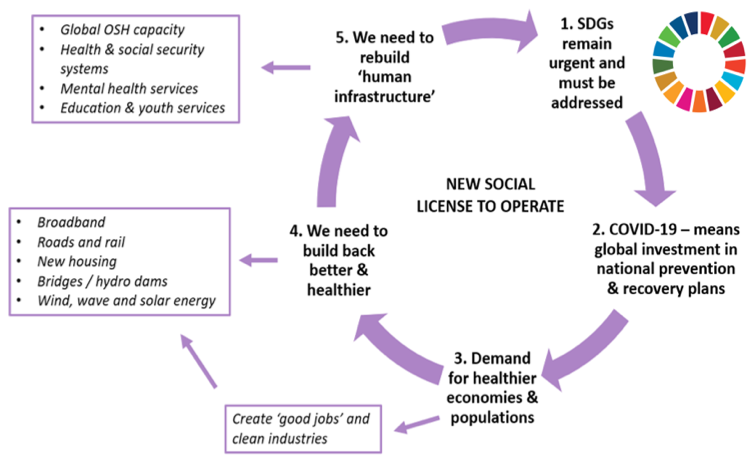Blog by Abigail Hirshman, Co-chair, Mental Health Group, Council for Work and Health
A few weeks ago, I delivered some mental health training for managers. During the session I was asked what you should do when someone has a panic attack. I gave some pointers and also mentioned their mental health first aiders might be able to provide support. When a participant asked, ‘What is a mental health first aider?’ I nearly fell off my chair.
The person then said, ‘Oh, so in a mental health emergency we have to ask them for help?’ ‘Well, not exactly,’ I replied. ‘Oh, so they train others in mental health..?’ ‘Well, not exactly,’ I replied. Clearly my explanatory skills needed some work, however it struck me afterwards to wonder what the purpose of mental health first aid (MHFA) is, and what value it can bring to the workplace.
This is particularly topical, as the private members bill proposed by Dean Russell MP to make MHFA a legal requirement is approaching its second reading in parliament[i]. Whilst we must assume that Mr Russell is acting with the best intentions, his lack of consultation with industry experts is concerning, given that many of us view this proposal as misguided and reductive.
Myself and colleagues at the Council for Work and Health (CfWH) have supported the approach taken by three ex MHFA Board Members, Amy McKeown, James Brown and Robert Manson who have written to Mr Russell seeking a wider and much needed consultation [ii]. At the CfWH we have long debated the merits or otherwise of MHFA and concluded that there is a place for it in the in the workplace. However, we believe it is ill-advised to mandate an intervention, where the evidence of its effectiveness is so limited[iii]. There are also a number of other unintended consequences of this approach.
Firstly, it is a distraction; the cost of mental health problems is equivalent to around 5% of the UK’s GDP[iv], and those with a long-term mental health condition lose their jobs every year at around double the rate of those without a mental health condition[v]. To address this requires proper training for managers and leaders of the benefits to making practical and supportive adjustments at work to those who live day to day with a mental health condition.
Secondly, it removes any obligation to consider the wider risk and protective factors to mental health at work. The implication that mental health is a static state that works just fine until you have an ‘accident’ and need first aid suggests mental health is fixed rather than a dynamic and complex experience driven by our early experiences, our genetics and our current environment. In 2022, the World Health Organization (WHO)[vi] published guidance highlighting the risks associated with mental health at work, none of which will be resolved by MHFA and nor should they be. MHFA is not a preventive measure but like physical first aid is aimed at those in need of immediate help.
Thirdly, this proposal ignores the need for an informed debate on mental health and how the workplace can be both a cause and a cure. The Stevenson Famer report triggered a huge change in the way we think and talk about mental health at work. Whilst this has generally been positive, it is also clear to me that just because we talk about something more doesn’t mean we understand it more. Six years on from the report, I continue to hear the same old tropes and biases, none of which will be eliminated by mandating MHFA.
We are starting to learn from research, lived experience and expert insights what is effective. This potential bill has galvanised industry experts to collectively debate what government could mandate that would actually make a difference. Mental health is complex, there is no one cause or one solution. Mental health at work doesn’t just happen on a Thursday or on a # or because that lovely lady in accounts trained as a mental health first aider. It is about organisations taking a strategic, systemic and systematic approach that evolves and adapts in line with the changing workplace landscape.
Abigail Hirshman is Co-chair of the Mental Health Group at the Council for Work and Health and Director of Charlie Waller Workplace.
[i] First-Aid (Mental Health) Bill – Parliamentary Bills – UK Parliament
[iii] RR1135 – Summary of the evidence on the effectiveness of Mental Health First Aid (MHFA) training in the workplace (hse.gov.uk)
[iv] Mental health problems cost UK economy at least GBP 118 billion a year – new research | Mental Health Foundation
[v] Thriving at Work: a review of mental health and employers – GOV.UK (www.gov.uk)

